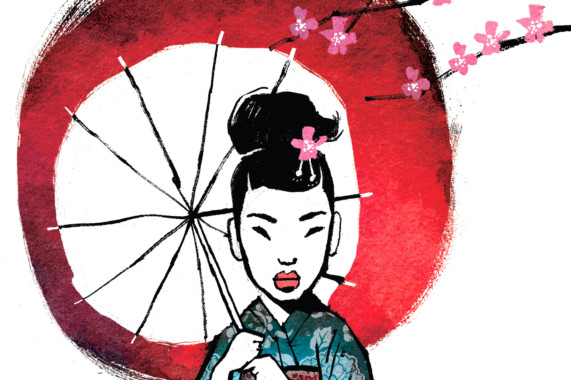
The Translation Of Love
By Lynne Kutsukake, Doubleday, 336 pages, $26
When Americans imagine Tokyo circa 1947, they picture General Douglas MacArthur in khaki, GIs tossing chocolate from jeeps, an emperor reduced from archfiend to bureaucrat. In his 1999 masterpiece, “Embracing Defeat: Japan in the Wake of World War II”, the historian John W. Dower shifted the focus to the Japanese, liberated, exhausted and bewildered. Now Lynne Kutsukake, a third-generation Japanese-Canadian and first-time novelist, conjures the voices of this agonised time with graceful simplicity.
First there is Fumi, 12 years old and in search of her big sister, Sumiko, who went to work when the family bookshop was firebombed — work that required her to wear wobbly heels and slit skirts, and kept her in the Ginza entertainment district more and more, until she stopped coming home at all.
At school, Fumi is annoyed when the teacher saddles her with a new “repat girl”, Aya Shimamura, a Vancouver native now forcibly returned to a “homeland” she has never seen. But perhaps Aya isn’t such a liability. “The government is interested in hearing from the people,” the Americans announced when they arrived, and a “little Mount Fuji” of mail has been growing at occupation headquarters: opinions, complaints, entreaties. Fumi decides that a letter to MacArthur is her best hope of finding her sister. And Aya, who is hopeless at everything but English, can write it.
Rounding out the cast are Corporal Yoshitaka (Matt) Matsumoto, a button-down translator with the occupation, born in America to Japanese immigrant parents, and Kondo-sensei, Fumi’s teacher, who moonlights as a bilingual Cyrano-for-hire, writing desperate “Dear Charlie” appeals on behalf of Japanese women clinging to the flimsy promises of departed GIs. The two men are the double conscience of the novel, two sides of an imperfect linguistic mirror.
The narrative perspective shifts constantly among these five, their actions and reactions sketched with minimal fuss. The story is satisfying but secondary to the mood: the quiet ache of loss. There are no landmarks in flattened Tokyo, and few indicators of what comes next. On the occupation-issued map hanging in Kondo-sensei’s classroom, Japan is now a “shrivelled bean” at the very edge.
Everyone is betwixt: suspended between the pain of the past and the uncertainty of the future, and caught between identities as well. Back home in America, Matt was interned as a foreign threat; now he’s among the ranks of the victors in American uniform, growing used to the shuttered glances he encounters in the street. Which side is he really on?
For Aya, it’s worse: There is no “back home.” “No Japs from the Rockies to the seas,” Vancouver’s member of Parliament famously trumpeted in 1944, and Aya’s father chose not to remain in a land where “they will always hate us”. Sumiko, flirting with danger in a dance hall, was raised to be “proper” — so then what to make of the persistent part of her that thrills to escape the conventional Japanese confines of good wife and wise mother?
The plainness of Kutsukake’s prose can verge on threadbare, with patches of earnest research peeking through, but these lapses are balanced by moments of indelible poignancy. A battered storefront advertises “DEMOCRACY POTS AND PANS.” The cheap red paint on the wall of a dance hall is like a woman’s lipstick, “faded and cracked by the end of the night”. A summer kimono printed with blue-and-white bamboo swaddles a discarded half-Japanese infant’s corpse.
In the background, like a chorus, are the letters constantly arriving at headquarters. “Dear General MacArthur,” writes an octogenarian survivor. “How should a man live?” Kutsukake’s aim is not to answer this, but to keep asking.
–New York Times News Service
Janice P. Nimura is the author of “Daughters of the Samurai: A Journey From East to West and Back”.









